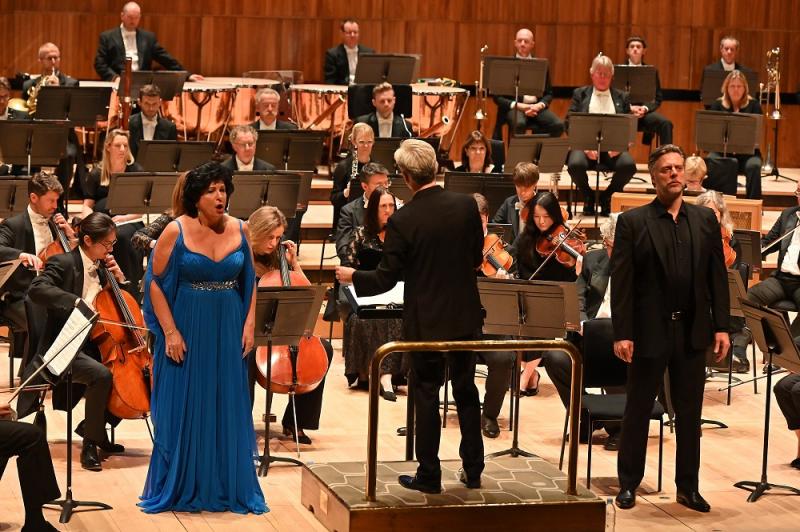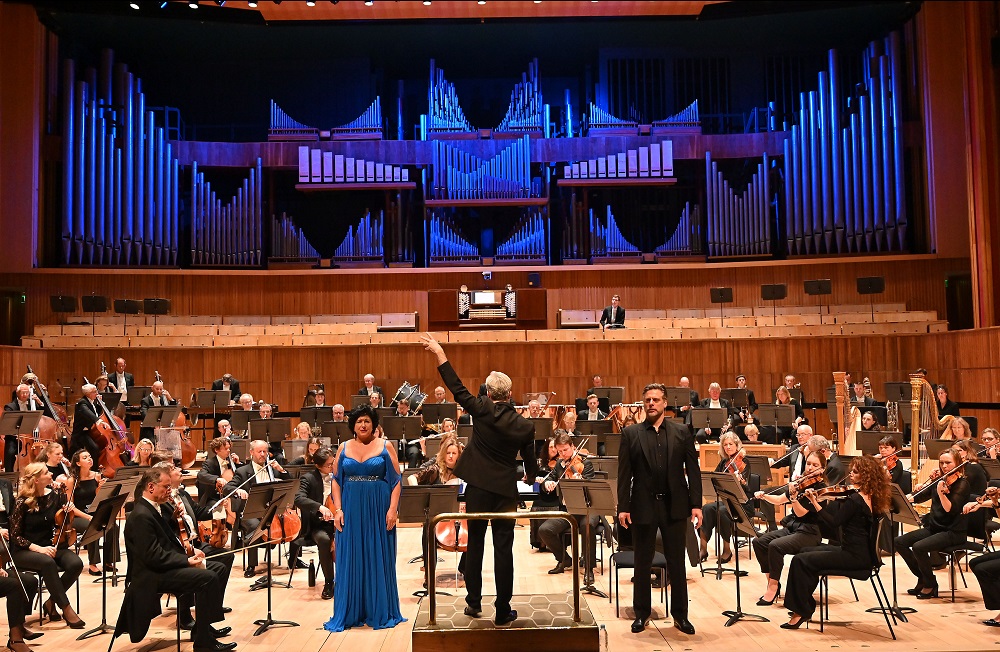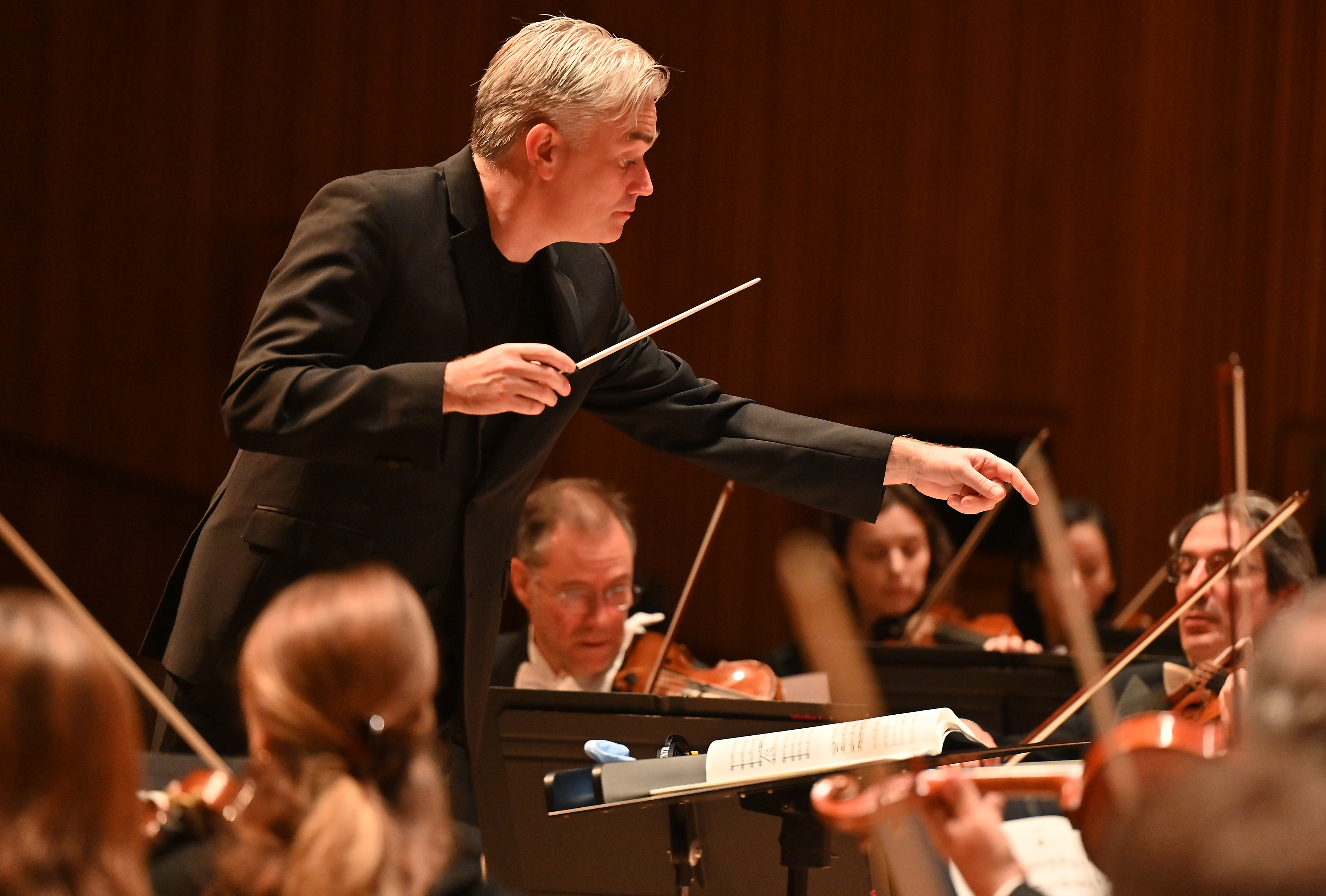Bluebeard’s Castle 2: Komlósi, Relyea, LPO, Gardner, RFH review - consolations of solitude | reviews, news & interviews
Bluebeard’s Castle 2: Komlósi, Relyea, LPO, Gardner, RFH review - consolations of solitude
Bluebeard’s Castle 2: Komlósi, Relyea, LPO, Gardner, RFH review - consolations of solitude
Singers transcend concert-performance conventions in the ultimate 'opera of the mind'

Where is the stage – outside or within? The question posed by the prologue of Bartók’s only opera addresses the fundamental privacy of our thoughts, as well as setting the scene for its drama within the theatre of our own minds. For many of us a year and a half of periodic lockdown has only turned up the volume on the echoing contents of our heads, lending an unlooked-for familiarity to Bluebeard’s forbidding castle.
Why, then, so modest a house for the London Philharmonic’s performance? The Theatre of Sound’s staging earlier in the day must have divided the potential audience: surely only masochists and critics willingly darken the door of Bluebeard’s Castle twice in a day. The clash with Die Walküre in Putney and La traviata at the Royal Opera issued further signs of London’s opera life returning to rude health.
This concert performance pulsed with an electricity emanating firstly from two singers inside their roles and performing from memory. The experience of Ildikó Komlósi in the role of Judith – having sung the role for over 30 years – set up an unusual and compelling power dynamic with the Bluebeard of John Relyea, whose longer-limbed cantabile underlined the Duke’s vulnerability. Both husband and new wife believe themselves master (and mistress) of the situation from the off. It is the journey and the tragedy of the opera that as they grow closer together, they discover realms within themselves and each other that ultimately set them apart. Komlósi’s almost conversational intimacy with her part, set against Relyea’s more conventionally operatic – still powerfully affecting – projection, heightened the sense of irreconcilable distance.  So too, though, did the contrast between their epigrammatic dialogue and the Straussian opulence of the orchestral texture. Edward Gardner’s measured pacing drew out the metallic taste of those minor seconds that taint Bluebeard’s treasures with blood, before opening out at the Fifth Door to the kind of widescreen panorama and psychosexual ecstasy not readily emulated by slimmed-down versions of the opera.
So too, though, did the contrast between their epigrammatic dialogue and the Straussian opulence of the orchestral texture. Edward Gardner’s measured pacing drew out the metallic taste of those minor seconds that taint Bluebeard’s treasures with blood, before opening out at the Fifth Door to the kind of widescreen panorama and psychosexual ecstasy not readily emulated by slimmed-down versions of the opera.
Bartók never wrote for a larger orchestra – never mind the Festival Hall organ at full tilt, plus brass reinforcements to its sides – and the LPO responded with playing of cultivated, lurid richness: at points such the unearthly shudders behind the Sixth Door, beneath Relyea’s desolate refrain of “Könyvek” (Tears), almost too enjoyable for its own good like a great Strauss score. Once all the Duke’s secrets had been exposed to the light, Komlósi inflected her last line with a mingled recognition, fear and resignation to her fate that on its own made for the most disquieting and memorable experience. 
rating
Share this article
The future of Arts Journalism
You can stop theartsdesk.com closing!
We urgently need financing to survive. Our fundraising drive has thus far raised £49,000 but we need to reach £100,000 or we will be forced to close. Please contribute here: https://gofund.me/c3f6033d
And if you can forward this information to anyone who might assist, we’d be grateful.

Subscribe to theartsdesk.com
Thank you for continuing to read our work on theartsdesk.com. For unlimited access to every article in its entirety, including our archive of more than 15,000 pieces, we're asking for £5 per month or £40 per year. We feel it's a very good deal, and hope you do too.
To take a subscription now simply click here.
And if you're looking for that extra gift for a friend or family member, why not treat them to a theartsdesk.com gift subscription?

Add comment